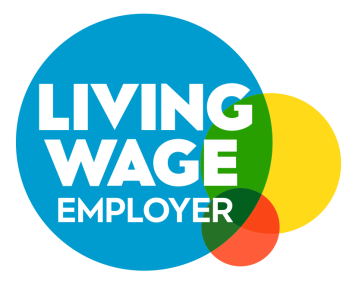7 Journalism Hacks to Aid Content Creation & Link Building Campaigns
With so many content creators competing for visibility, you need to be producing pieces that instantly grab attention - and the world of journalism is a great place to look for inspiration.
There are loads of great ways the discipline can inspire you to create more compelling content and several reasons why you should be flavouring your marketing content with journalistic ideas:
Organic search visibility: As recently as September, Google announced they would be giving preference to original news reporting in their search results. In section 5.1 of their rater guidelines, Google instructs raters to lean on the highest rating for original news reporting “that provides information that would not otherwise have been known had the article not revealed it. Original, in-depth, and investigative reporting requires a high degree of skill, time, and effort.”
Stronger pitches: Content written with sound journalistic principles in mind will appeal to journalists. It’s that simple. If you know how they write their own pieces, you can structure your pieces/pitches to include all the key elements they need to inspire coverage.
Encouraging clicks: Whether it’s a title tag written like a headline, a meta description crafted like an intro or an eye-catching article title that encourages users to click deeper into your site, there are simple hacks you can use to great effect.
Share-ability: By focusing on creating headline-grabbing content that pushes boundaries, asks questions and challenges readers, you’ll inspire interest and encourage people to share your work across social media platforms.
Using the following tips will enable you to create more ground-breaking content; that engages readers, appeals to Google, grabs the attention of journalists and gets shared on social platforms:
1. BORROW FROM THE INVERTED PYRAMID
When you’re creating your content and accompanying pitches, don’t hide the best information at the base of your piece or emails! Instead, get the most important information you have front and centre.
In terms of getting people to read your content, the introduction you run with is absolutely vital to your hopes. A recent Chartbeat study found that one in three article page readers stay on a website for less than 15 seconds.
Given that this stat is based on the behaviour of 2 billion web visits over the course of a month, it’s safe to say it’s a strong indicator of how little time you have to deliver value. So what can you do about it?
Well, leveraging the inverted pyramid principle would be a great start. This is an age-old trick taught to budding journalists; based on the basic argument that you need to get the most important information (namely an appropriate combination of Who? What? Where? When? Why) in the first couple of paragraphs of a story.

When you think about it, it’s a no-brainer too. Lead with the most important information and continue through your post in order of decreasing importance. If you want the reader to engage with the finer details, it’s your challenge to inspire them to get there.
You should apply this approach to your outreach too. 2019 research from Backlinko identified that only 8.5% of the 12 million outreach emails they analysed received a response. That’s a staggeringly poor response rate, which only serves to highlight how difficult it is to gain exposure for your content. Imagine not putting the most important information from your content at the top of your email?
2. LEARN TO WRITE CATCHY HEADLINES
According to HubSpot, 47% of companies cite content distribution and amplification as being their top inbound marketing priority, meaning that there’s a great deal of competition when it comes to ensuring yours is the content that gets noticed.
Right at the top of your list of tactics to improve your chances of success should be finessing your headline-writing skills.
You should think of your headline like a sales pitch for your content. Do everything you can to grab attention with it, because if you produce a great story that has a dull, uninteresting title; you might find no one cares enough to engage with it.
Headlines matter a great deal on the pitching front too, since they can be used to form your subject line. If you put an email in a journalist’s inbox, it might be the best study that’s ever been written; but the truth is that if you fail to give it a headline to match, it might never get seen.
Choose your language carefully. Don’t underestimate the importance of the words you include. Words that convey a sense of urgency can be really effective at driving clicks.
Think about where the article will be placed. Headline writing for an article you want to gain exposure on social media, for example, is very different to headline writing for content you’d like to be covered by a news website such as The Guardian.
At Evoluted, we’re always looking for the best headlines to use with our outreach. One of our clients operates in several global locations in the field of scrap car recycling. For them, we conducted a study to bust the myth that all alcohol cooks off when you heat food. We tied the idea into a Christmas, showing alcoholic food could push you over the UK drink-driving limit, if you’d already had one standard glass of wine.
We needed a headline to encourage coverage of the study and the one we came up with saw the outreach lead to over 100 followed links in the press for our client.

3. BE A GOOD STORYTELLER
Stories continue to play a vital role in Digital PR, as brands compete for their pitches to be heard above others. Part of the reasoning behind this is that the journalists providing the coverage of our marketing content love a great story - so it’s worth thinking about how well you’re committing to telling your own stories with your current content strategy.
With only 52% of B2C marketers using storytelling to nurture their audience, there's a real opportunity to stand out with the strategy.
In 2019, I spoke with BBC journalist Parisa Qurban about this and she summarised it perfectly when discussing how she reported on Brexit, freedom of movement and the potential impact on specific individuals.
By putting people and important topics at the heart of your content, you give the audience someone or something to empathise with; ensuring their emotional investment in the content they read.
If you do this with relevant content (because stories won’t always be the answer), you’ll win plenty of friends in the media. This will hopefully lead to more coverage and links for your brand.
Some things to consider when you’re thinking on how to give your content the ‘story’ angle include:
Put a protagonist/hero at the centre of your story
Create content with a sad beginning and a happy ending
Be controversial
Humanise the content you create with quotes, videos and imagery
Do something memorable
Always be thinking about yours or your clients’ audiences and what makes them tick.
4. USE QUOTES AND QUANTIFY STATEMENTS WITH SOURCES
Quotes and statistics (taken from reputable sources or original research) should be a central consideration to the headline-worthy content you’re looking to create. Without them, your content could just end up as a mix of thoughts that ultimately offer very little that’s newsworthy.
Quotes
I trained as a journalist and one of the earliest things instilled in you is how important quotes are to a story. People care about what others are saying and the thoughts of a reputable individual add meaning, and a point of reference, for the reader.
So, if you’ve got a piece of content you think has the potential to do well with outreach, don’t fall down because you didn’t spend 15 minutes securing a quote. Those 15 minutes could be the difference between your content being newsworthy or not.
Sources
As well as personal sources, your data sources are also of course an integral part of your content too. When you’re putting together your pieces, ask yourself the following questions:
Is the data I’m referencing unique? (For example, is it a survey I’ve commissioned)
If I’m using another source, has the data already been analysed and can I make it newsworthy?
Am I demonstrating enough added value with how I’ve used the data? (For example, accompanying data visualisations)
Asking these questions (ideally at the start of you projects) should help you filter out the best ideas in terms of gaining coverage.
Pitching
When it comes to pitching, these points ring truer than ever. Journalists love quotes and they also like to have facts cited with credible sources. What they don’t like is having to ask you to provide this as part of the content you pitch to them. Include everything you can and give them every reason to be able to use the content you send without them having to ask for more.
For more inspiration on what’s considered a good quote, this article from JournoLink is well worth a read.
5. BE TOPICAL, FAST AND REACTIVE (OR PROACTIVE)
The modern-day news cycle puts immense pressure on content creators to come up with stories that grab attention.
The very nature of news is its topicality. Think about this whenever you’re looking to get yours or your clients’ brands in the news. What are the current hot topics of discussion? How could you create content that relates to those topics?
If you can be topical, fast and reactive, you’ll undoubtedly improve your chances in the race to the top. Good planning can also allow you to react proactively around key dates.
This post about the differences between reactive and proactive PR is well worth a read before you start this type of content.
Proactive PR: One thing to consider is that you may be able to plan ahead of time and create content based around seasonal trends, providing you with stories you can give to journalists in the lead-up to annual events (changing seasons, data releases, Christmas etc.) Use a piece of project management software such as Asana to create a schedule and allocate tasks to team members to ensure key dates are reviewed around ideation time.
Reactive PR: Look for opportunities to create content that enables you to react quickly to stories too. As brands look to add weight to hot topics of discussion for their own benefit, newsjacking is as successful as it’s ever been. Consider monitoring the news and social media for opportunities. Hootsuite and Google Alerts are just two examples of the many tools available for this. If you plan on producing reactive content, do make sure you do it quickly. If you can’t be the first to the punch, you might be wasting your time.
This stunt by Burger King was a brilliant example of a proactive PR campaign that simultaneously made a strong impression and trolled McDonald’s.

6. MAKE YOUR CONTENT QUOTABLE AND TRANSFERABLE
When you’re creating content, you want as many people to see it as possible, right? This is no different to a journalist wanting to be the first to a story, so that they (and where relevant, their employer) can gain credit as the original source.
This is relevant here because for a story to be covered in multiple locations, it should include a set of key points that can be used easily by others. These may include:
Relevant quotes
Imagery
Key statistics
Integral facts such as important dates
If you can make these points stand out within your content by giving them prevalence (see point 1), it’ll make your work a great deal more shareable.
Other things you can look to do include using short, succinct paragraphs where possible and breaking up the content with engaging, informative headings. This will make your content easy to review, analyse and quote.
7. BE DARING
Finally, when you’re ideating your content, always be thinking about what you can do to make your ideas stand out - you’ll certainly need to.
A 2019 survey of 500+ journalists by Fractl found that Staff Editors and Staff Writers receive 53 and 37 pitches per day respectively. When you consider that figure doesn’t include all the other email types they’re likely to receive, you’re going to have to do something to make an impression.
Quite how daring you want to be with your ideas can only be determined by you and the companies you represent. You ultimately have to weigh up whether the exposure justifies any potential negative reactions.
To help ensure you make the right decisions though, there are some useful tactics to follow:
Educate your clients or the decision makers at your company of the value of the work you’re doing. Explain why you need to try something riskier to achieve what they want. Offer meetings, create succinct PDFs - do whatever it takes to get the buy-in.
Study the subjects that the journalists you want to cover your story tend to write about. Is there a way you could try something outside the box that would appeal to them?*
*Tip: Try following the process below as a means to inspire truly notable content ideas in this area:
Decide the subject area you want to cover
Research and generate a list of articles specifically related to that subject area
Research and generate a list of articles more tenuously related to that subject area
Find contact information for all the journalists that have worked on those pieces
In each case, think about how you could create a daring new angle to a story they’ve worked on
Ideate your content and pitch it to the journalists you’ve found
Whatever you decide to do, never let your approach become stale and always be willing to try new ideas and approaches.
Above all else, it’s worth asking yourself and your clients whether you can hope to stand out - be that for links, traffic or sales - without being willing to get creative.
CLOSING
As we move into 2020, content marketing, PR and journalism are more aligned than ever. This means those producing content, or seeking exposure of it, probably share more values and skills than they ever have before - and that’s a real positive.
By leveraging the knowledge and expertise of the journalist discipline, you can better understand the constraints journalists face and ensure you change up your strategy to make them want to work with you. You’ll also begin to create more headline-grabbing content in the process.
Thanks for reading! If you require expert support with your website copy, check out our content marketing services today.











